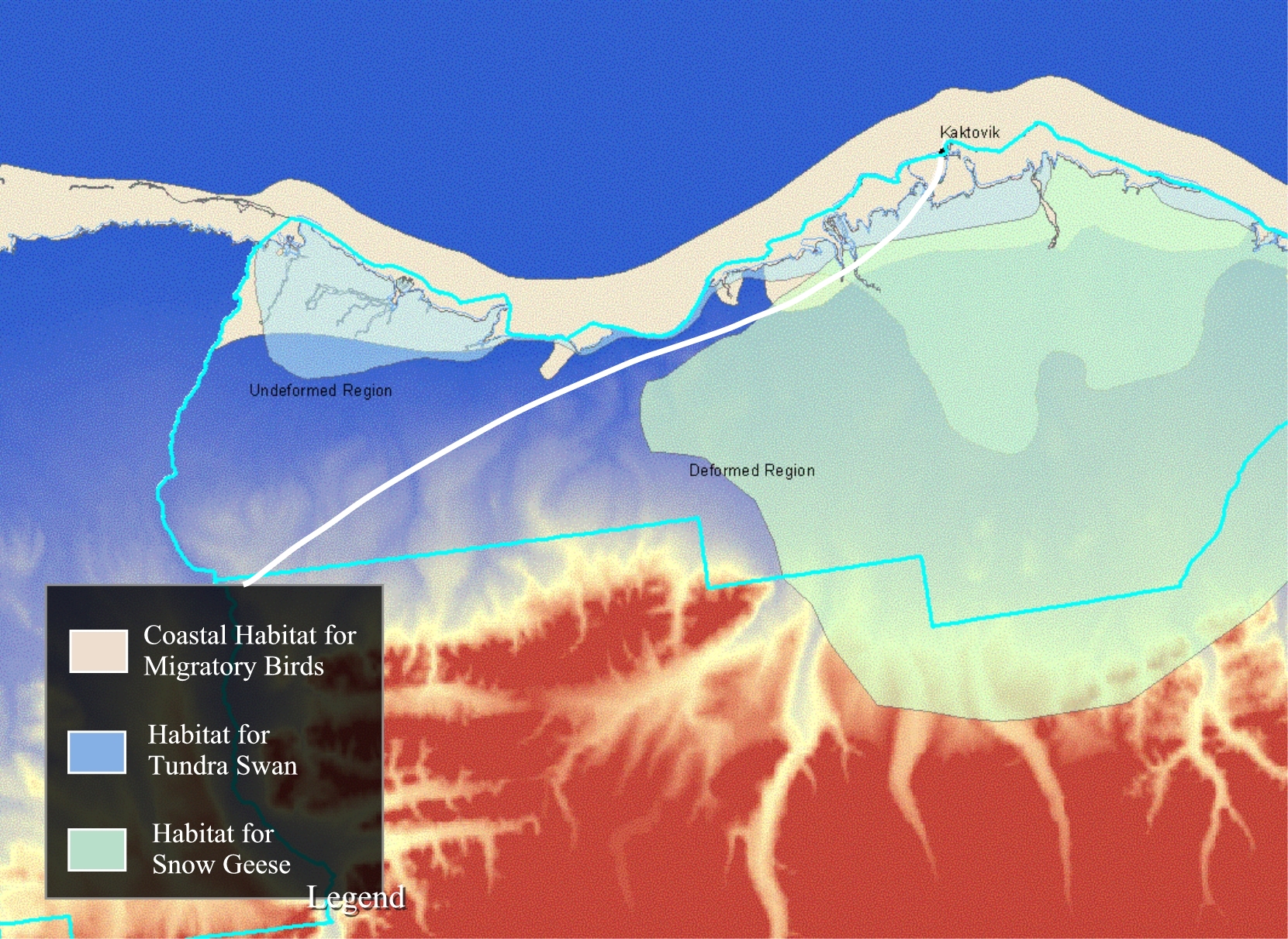Avian Species in ANWR
Every year, thousands of avian species migrate to the
Coastal Plain of ANWR. There they find a prime, pristine arctic breeding ground
that exists as an abundant source of nutrition and nesting territory. Many of
the birds that travel up to thousands of kilometers to this land are threatened
or endangered species. Five species that fall into this category are the tundra
swan, buff-breasted sandpiper, pigeon guillemot, sea duck, and snow goose.
 Collectively, the critical time periods for courtship, breeding, and fledgling maturation—or molting in the case of the sea
duck—occur between the months of April and November. Therefore, it is
repeatedly suggested that human disturbances be limited throughout those months.
The main disturbances to be concerned about are those caused by oil-drilling
development such as exploration, extraction, and transportation tactics.
Collectively, the critical time periods for courtship, breeding, and fledgling maturation—or molting in the case of the sea
duck—occur between the months of April and November. Therefore, it is
repeatedly suggested that human disturbances be limited throughout those months.
The main disturbances to be concerned about are those caused by oil-drilling
development such as exploration, extraction, and transportation tactics.
Image Source: http://www.anwr.org/photo.htm
It has been reported by several sources that many species,
especially the tundra swan and snow geese populations, are significantly
affected by noise pollution. In fact, tundra swans are so sensitive that they
will abandon nests, and snow geese will often not return to areas where noise
repeatedly disrupts the environment. Other species such as the sea duck are more
vulnerable to seismic activity that is employed for the purpose of exploration.
In addition, although oil spills are becoming less common and smaller in volume
as technology improves, they continue to pose a major threat to the birds that
inhabit the 1002 area every summer.

More on birds that may be affected by oil-drilling in 1002:
Tundra Swan
Snow geese
Sea ducks
Buff-breasted sandpiper
Pigeon guillemot
For more detailed information about the general
characteristics, populations, etc. of avian species that migrate to ANWR, please
click here.
 Collectively, the critical time periods for courtship, breeding, and fledgling maturation—or molting in the case of the sea
duck—occur between the months of April and November. Therefore, it is
repeatedly suggested that human disturbances be limited throughout those months.
The main disturbances to be concerned about are those caused by oil-drilling
development such as exploration, extraction, and transportation tactics.
Collectively, the critical time periods for courtship, breeding, and fledgling maturation—or molting in the case of the sea
duck—occur between the months of April and November. Therefore, it is
repeatedly suggested that human disturbances be limited throughout those months.
The main disturbances to be concerned about are those caused by oil-drilling
development such as exploration, extraction, and transportation tactics.